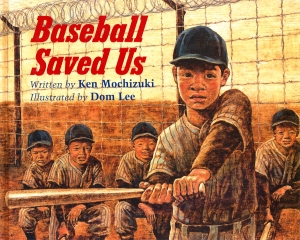![]()
 Guest blogger Katie Cunningham is an Assistant Professor at Manhattanville College. Her teaching and scholarship centers around children’s literature, critical literacy, and supporting teachers to make their classrooms joyful and purposeful. Katie has presented at numerous national conferences and is the editor of The Language and Literacy Spectrum, New York Reading Association’s literacy journal.
Guest blogger Katie Cunningham is an Assistant Professor at Manhattanville College. Her teaching and scholarship centers around children’s literature, critical literacy, and supporting teachers to make their classrooms joyful and purposeful. Katie has presented at numerous national conferences and is the editor of The Language and Literacy Spectrum, New York Reading Association’s literacy journal.
When we lived in Brooklyn, I knew my sons were growing up in a diverse community. They understood that people have different skin colors. That people speak different languages. That people eat different foods. That people believe different things. That we all share a common humanity. That life is full of complexity.
Now we live in the woods and appreciate the quiet of country living but this is far from a diverse community. For my boys, there is greater diversity in the pages of a book than on the streets of their town. Multicultural children’s literature is a doorway into greater understanding that their cultural background is not the only cultural background. That their way of speaking is not the only way of speaking. That their point of view is not shared by everyone.
When we open a book and start to read a story, we use our imaginations to walk through whatever world the author has created. Children’s literature is full of stories about boys and girls that look like my children. Rudine Sims Bishop uses the terms mirror books and window books to describe how we both see ourselves and see others when we read literature. The characters my sons encounter are often mirrors and they find their life experiences reflected in the books they read. Children from dominant social groups have always found their mirrors in books, but do they have enough access to high-quality stories that represent other cultural backgrounds in a positive way?
My sons need more than mirror books. As I scan our reading shelves at home I know we can do better. When I walk into many classrooms, I know they too can do better. My sons and all children need books that provide windows into other life experiences to understand the diverse world we live in and to build connections to all other humans. After all, when the lighting is just right can’t a window become a mirror?
My friend, colleague, and global literacy leader Pam Allyn takes Charlotte’s Web with her when she travels to Lit Clubs in Kenya, Haiti, and South Korea. She takes Charlotte’s Web because even though the children she meets do not look like or speak like Fern, there is a shared humanity in E. B. White’s words that is unparalleled, and all children can find a mirror in Fern’s courageous spirit. Pam has created Lit Clubs and Lit Camps through her organization LitWorld that emphasize the human strengths found in stories. Imagine if all the stories we read with children were framed around human strengths? What strengths would you choose?
Of course, stories also help us understand that the world we live in is not what it should be. Stories can help young children understand that racism very much exists in this country, and that power is unequally distributed based on race, class, and gender. For children from dominant groups, window moments in stories come when the children realize they hold a powerful place in society and that there is something unjust about this. Two stories that center on human strength and offer powerful mirror/window possibilities for children are Baseball Saved Us by Ken Mochizuki and Seeds of Change: Planting a Path to Peace by Jen Cullerton Johnson. Baseball Saved Us is about an underdog believing in himself and the strength that comes from confidence, but it also tells about an ugly chapter in United States history when Japanese Americans were sent to internment camps during World War II. Seeds of Change is a story of perseverance in the face of political opposition and bias against women. It is also about respecting nature and the power of collective action to change a landscape and the sustainability of a nation. There are many more such stories. Yet, are we reading them to children at home and in our classrooms?
President Obama in his Second Inaugural Address emphasized the legacy of Dr. Martin Luther King Jr. when he said, “our individual freedom is inextricably bound to the freedom of every soul on Earth.” Stories can help children realize this. Isn’t a sense of social justice something we want all children to develop? Through the thoughtful selection of books we read to our children we take a step toward creating adults who desire a world that is better than the one we live in today.
So, parents and teachers, what can you do?
- Acknowledge that every story has mirror and window possibilities
- Emphasize that we live in a diverse society
- Arm students with stories where their background is represented in a positive light and where their life experiences are validated
- Discuss themes in stories to unpack mirror possibilities for all children
- Read aloud stories that represent positive aspects of the human spirit and where characters rally together for collective action
- Be open to discussions of inequality that you see in stories and in life; discuss with children a vision for a better world
- Look for links to literacy standards such as the Common Core State Standards Reading Literature Standard 6 across grade levels; this is a strand of standards that emphasizes point of view
Further reading:
What’s in your classroom library? Rethinking Common Core recommended texts











